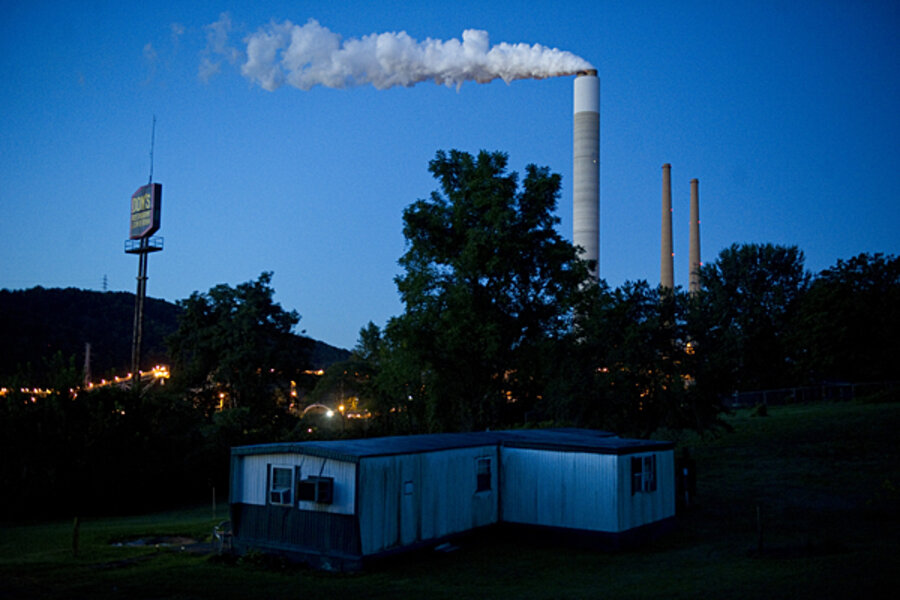Supreme Court OKs EPA pollution rules: another blow for coal
Loading...
US coal plants in some upwind states are going to have to clean up their act.
The Supreme Court upheld Tuesday a 2011 federal rule governing the amount of air pollution some states can let drift across their borders into their downwind neighbors. The 6-2 ruling is a win for the Obama administration, which has leveraged executive powers to curb pollutants from the nation's power sector. Under Tuesday's ruling, some 28 Midwestern and Southern states will have to cut emissions of sulfur dioxide and nitrogen oxide from coal-fired power plants.
Supporters of the law cheered the ruling, saying it would protect millions of Americans from pollutants that have been linked to public-health issues. Critics of the White House's climate action plan have likened it to a "war on coal," threatening an industry that supplies about 40 percent of the nation's electricity.
Coal's outlook remains bright abroad, where it is largely fueling developing economies, and new technologies could make the world's most polluting fuel a viable option in a low-carbon economy. But Tuesday's Supreme Court decision is the latest in a series of blows to coal's future in the United States, and foreshadows pending rules that would have an even greater impact on the industry.
“EPA continues to abuse the Clean Air Act, imposing overreaching regulations that promise little ‘gain’ with great ‘pain’ for American consumers and the broader American economy," Laura Sheehan, senior vice president of communications for the American Coalition for Clean Coal Electricity, an industry lobby group, said in a statement. "While [the Cross-State Air Pollution Rule] is just one example of President Obama’s climate crusade, EPA’s forthcoming carbon rule on existing generating units promises to be the most flagrant and costly abuse of the Clean Air Act to date.”
That rule, which the EPA plans to formally propose this June, would limit the amount of carbon pollution from existing US power plants. It builds off a similar rule proposed last year that limits pollution from new plants, and it would effectively require coal companies to retrofit plants with expensive carbon-capture-and-storage technologies.
Critics of the plan say the technology isn't ready for prime time, and would put an undue burden on local economies that depend on coal plants. But the hope is that the regulations would spur innovation and cost-reduction in a technology that could dramatically curb the world's largest source of man-made carbon emissions.
Perhaps the greatest existential threat to US coal comes not from federal regulations, but from decades of innovation that have unlocked a natural gas bonanza in the US. As production has ballooned over the past five years, prices have fallen, leading many utilities to shift from coal-fired power plants to ones that run on natural gas.
Even if Tuesday's Supreme Court ruling further dims coal's future, coal is nonetheless expected to make up 32 percent of US electricity production in 2040, according to the US Energy Information Administration (EIA). Coal's outlook is even better abroad, where China, India, and other rapidly expanding economies are eager customers for the inexpensive fuel. World coal consumption is expected to rise at an average rate of 1.3 percent per year through 2040, according to EIA.
That's bad news for the environment. With the highest carbon content of all the fossil fuels, coal makes up about 44 percent of global carbon emissions, according to the Paris-based International Energy Agency. It is also a major source of sulfur dioxide and nitrogen dioxide, the two pollutants under consideration in Tuesday's ruling.
“Today’s Supreme Court decision means that millions of Americans can breathe easier,” Fred Krupp, president for the Environmental Defense Fund (EDF), which was a party to the case, said in a written response to the decision.






